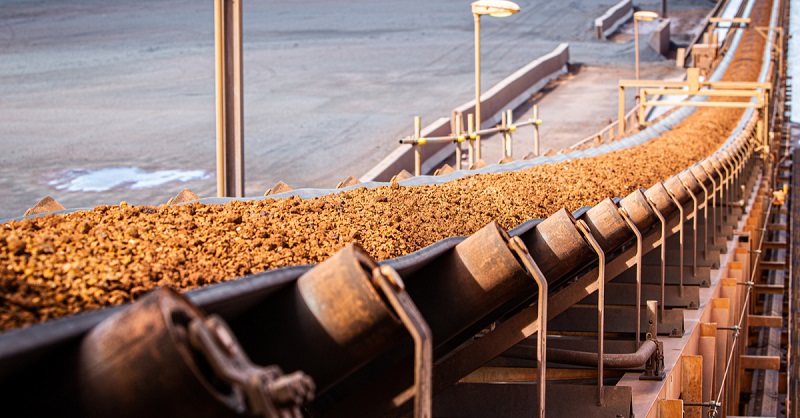Doing business

Iron ore prices decline is accelerating
Commodity markets have always been highly volatile, especially in the times of geopolitical instability, such as now. However, a sharp drop of steel raw materials prices makes the situation different. Since the beginning of June, the price of iron ore has fallen by 14.9%, and scrap – by 25.9%. Such a rapid downfall of prices is typical for crisis situation s, as it was in 2014-2015, and amid the war.
The fall of steel raw materials prices is largely related to a decrease of finished steel products prices. After a shock surge at the beginning of the war, by June 2022, steel prices returned to their pre-war levels (we explored the reasons in other article). Rising energy prices, including natural gas, oil, electricity, led to a record reduction in the margins of steel producers.
The price of oil has grown by almost 40% since the beginning of the year, and it is obvious that with the refusal to purchase Russian oil the upward trend to stay. Inflation, triggered by rising energy prices, increases the cost of production at the micro level, and hinders economic growth at the macro level.
According to World Steel Dynamics calculations, in May the spread between the price of hot-rolled sheet and the cost of raw materials for steel production and energy fell to levels that are significantly lower the pre-pandemic. In May 2022, the spread was 24% below the average level of 2018-2019. This is a worrying fact, since 2019 was a crisis year for the industry, and inflation has accelerated since then, significantly devaluing the margins of steel producers.
What are the consequences of the fall in the marginality of steel production? Steelmakers are looking for opportunities to cut raw material costs. They cannot affect the energy prices, since the pricing of energy resources depends on geopolitical factors. But steel producers can put pressure on their suppliers of iron ore and scrap to somehow compensate rising energy costs.
As a result, prices for scrap and iron ore are declining, and prices for scrap are declining faster. Compared to the beginning of the war, prices for scrap fell by 35%, for iron ore – by 16%. To some extent, scrap and iron ore are fungible resources. A significant reduction in scrap prices makes electrometallurgical production more competitive and gives it the opportunity to increase its load. BOF producers then have to put pressure on their suppliers to lower iron ore prices. Therefore, it turns out that the fall in prices for scrap spurs the fall in prices for iron ore.
Lower raw material prices and lower steel prices set off a “death spiral”: raw material prices fall, so the price of finished products falls, and the decline in finished product prices then pushes raw material prices even further down. Therefore, the decline in prices is there over a long time.
According to Australian government forecasts, the average price of iron ore will be $110/t in 2022, and will decrease to $80/t in 2023. Going forward, the Australian government expects the decline to $55/t by 2027 to continue. Australia is the world’s largest exporter of iron ore (884 million tons in 2021), so monitoring the situation in the industry is given great attention at the government level there.
The current downtrend is expected and predictable. It is based on a combination of two fundamental factors – the US Federal Reserve’s rate raise and China’s economic slowdown. To fight inflation, the Fed raised rates by 0.75 percentage points on June 15. This is the sharpest rate raise since 1994, and it won’t be the last.
On the other hand, China, which is the largest consumer of commodities, is experiencing a slowdown in economic activity. In particular, retail sales in April fell by 11.1% y/y, and real estate sales – by 39.0% y/y. The Chinese economy is being negatively impacted by the recent lockdowns that were introduced to hold back coronavirus. In the medium term, problems may pop up in the local real estate sector, which has a high level of debt.
Moreover, the factor of the US Federal Reserve is stronger than the factor of China. The tightening of the Fed’s monetary policy will have a long-term impact on commodity markets and China’s economic recovery too. Therefore, there are currently no grounds for optimistic scenarios.
The Ukrainian iron ore industry is in a much more difficult position than our main competitors in the world market (Australia, Brazil, South Africa). Ukrainian producers are under pressure not only from global factors, but also from the tense military situation. The transport infrastructure, as well as the enterprises, are under the threat of shelling and physical destruction. There is a shortage of fuel in the country.
Ukrainian mining works with a load of 45%. More precisely, until recently the prices on the world market allowed them to work and take on transport risks. The situation may worsen dramatically in the near future. Prices in the EU, which is now the main sales market for Ukrainian producers, have approached critical values. In particular, the concentrate price reached $90-100/t. This is already below the break-even point of domestic miners, so further deterioration in the market situation will have catastrophic consequences for the industry.
Source: https://gmk.center/ua/